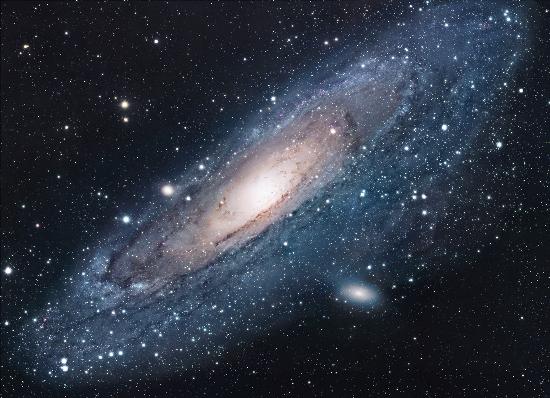
Image courtesy of Gizmodo
 Copyright © Michael Richmond.
This work is licensed under a Creative Commons License.
Copyright © Michael Richmond.
This work is licensed under a Creative Commons License.
Today, we deal with finding the center of mass in extended objects -- it can be more difficult than the case for point masses. We also will look at how one can use the motion of objects around their center of mass to detect planets around other stars.
Why do we care about the center of mass? As you saw at the end of yesterday's class, if a system consists of several pieces which break up or come together under mutual forces only, then the center of mass of the system will continue to move with a constant velocity; that can be useful when dealing with objects which fly through the air while exploding

Image courtesy of
Gizmodo
or which consist of many, many, MANY individual pieces, which are just a pain in the neck to deal with individually

Image copyright
Robert Gendler
We'll start with the simple case of a set of hard little balls.
" ... in projectile motion, the x-velocity remains
constant while the y-velocity changes linearly with
time. The trajectory of an object thus traces
a parabolic curve ...."
don't seem to work if you pick any arbitrary part of an extended body. For example, if I toss a baseball bat up into the air, a movie might show this:
But how can we find the center of mass of an extended object?
Now, let's put the idea of center of mass to work.
 Copyright © Michael Richmond.
This work is licensed under a Creative Commons License.
Copyright © Michael Richmond.
This work is licensed under a Creative Commons License.